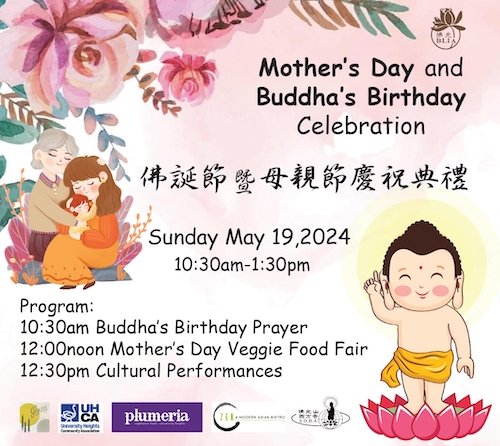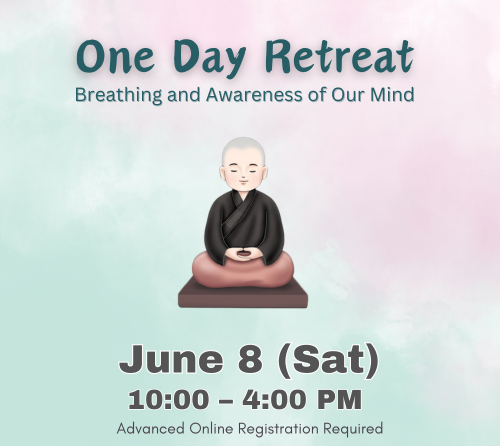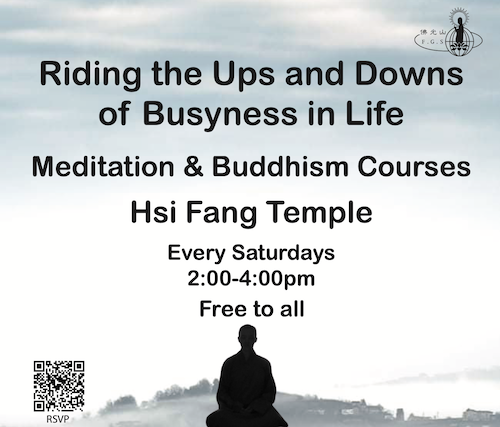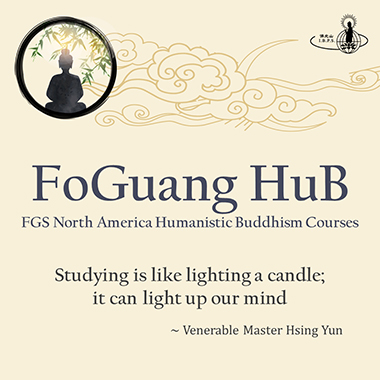When was Hsi Fang Temple built?
Construction of the temple began in December of 1987 and was dedicated in June of 1989.
Why was Hsi Fang Temple built?
Hsi Fang Temple was built to serve those who are interested in learning Buddhism as well as Chinese culture and to act as a bridge of cultural exchange between the East and the West.
What was the origin of Hsi Fang Temple?
Fo Guang Shan Temple (Buddha’s Light Mountain Temple), the order of Hsi Fang Temple, established in Taiwan in 1967, has endeavored to propagate Humanistic Buddhism throughout the East, and later on, Venerable Master Hsing Yun, the founder of Fo Guang Shan Temple, decided to move towards the western world. Hsi Fang Temple was thus established to symbolize the dissemination of the Buddhist doctrines in the westerly direction. “Hsi Fang” literally means “direction to the west”.
How large is Hsi Fang Temple?
Situated on a half acre of land are the two three-story buildings of Hsi Fang Temple. One of the buildings is the Main Shrine and dining area while the other building is where the bookstore, classrooms and guest rooms reside.
What are the objectives of the Hsi Fang Temple?
The objectives of Hsi Fang Temple run parallel to those of Fo Guang Shan. They are
- To propagate the Dharma through cultural endeavors;
- To develop talent through education;
- To benefit society through charity;
- To purify human minds through Dharma practice.
The Fo Guang Shan Buddhist Order and its San Diego branch temple, Hsi Fang Temple, practice Humanistic Buddhism. The Buddha was born in this human world, cultivated himself in this human world, was enlightened in this human world, and taught human beings the way to experience Nirvana (freedom from suffering) in this world and not apart from this human world. The Buddha taught that it is through our humanity that we will attain Buddhahood – full Enlightenment.
Humanistic Buddhism teaches that one can live fully in this human world and practice Buddhism at the same time. The two endeavors are not separate. They support each other perfectly by enabling one to cultivate the wisdom that clearly understands the true nature of reality. Humanistic Buddhism encourages one to integrate the Buddha’s teachings of tolerance, loving-kindness, compassion, joyfulness, and equanimity into our lives for the benefit of all beings.
What are the activities conducted by Hsi Fang Temple?
Education
Classes and lectures in Buddhism and special topics are conducted regularly in Mandarin and English. In addition, summer camp, community projects take place throughout the year.
Culture
Efforts for cultural development include quarterly publications of Buddha’s Light Newsletter and other Buddhist periodicals as well as Buddhist studies and events.
Cultivation
On Sundays, Dharma services are held, which include the Diamond Repentance Service, the chanting of Amitabha Sutra, Universal Gate Sutra, Eight-eight Buddhas’ Great Repentance, and Buddha’s Birthday Ceremony Service. Meditation sessions are also conducted.
Charity
In addition to a prison propagation program, there is an ongoing effort to help people who are in need of assistance.
What is the role of the Hsi Fang Temple monastic?
Hsi Fang Temple monastic devote their time and efforts to spreading Buddhist teachings by offering lectures on Buddhism, classes, and activities on a regular basis for those who are interested in learning the teachings. They cultivate to realize their true nature, apply the Buddhist teachings in their daily lives, and express the realization to interact with others.
Who may participate in the activities of Hsi Fang Temple?
Anyone who has genuine motivation and willingness to learn about Buddhism is welcome to participate in the activities of Hsi Fang Temple.
Are there classes available in English?
Yes. And Hsi Fang Temple provides English translations to all Sunday Dharma services and lectures. Please refer to our on-line calendar of events.
Who are the Buddhas in the main shrine and what do they signify?
Sakyamuni Buddha is the teacher and founder of Buddhism. Siddhartha Gautama (Sakayamuni Buddha’s secular name) was born as a wealthy prince over more than two thousand five hundred years ago in northern India. At the age of 29, even though he enjoyed a life of luxury, Siddhartha left his family and wealth, determined to search for the truth and the solution for those who suffer from birth, aging, sickness, and death. After six years of practice, while meditating under a bodhi tree, he realized the truth of the universe and the full insight into the way of life. Buddhists call this understanding Enlightenment. Upon reaching enlightenment, he was called Sakyamuni Buddha. Sakyamuni Buddha taught for forty-nine years after attaining enlightenment and upon his dealth (the physical body died) he entered into parinivana ( a conscious state of full liberation) at the age of eighty.
Amitabha Buddha is the teacher of the Western Pure Land. When he was a Bodhisattva, he made 48 vows to establish the land of ultimate bliss, devoid of worldly miseries, for the sake of receiving all suffering beings. In the Western Pure Land, sentient beings will continue to receive the teachings of Buddhas and bodhisattvas until their attainment of Buddhahood. Buddhists commonly greet each other with Amitabha or “O Mi To Fo,” which means “bless you with infinite life and light (wisdom).”
Avalokitesvara Bodhisattva (Guanyin) is the embodiment of great compassion for the suffering of the world. She (symbolized great compassion as a female character) will come to the aid of anyone who invoked her name sincerely and mindfully.
Mahasthamaprapta Bodhisattva represents the wisdom of Amitabha Buddha. The Bodhisattva brings to humanity the necessary knowledge for liberation.
Ksitigarbha Bodhisattva is renowned for his great vow. He has vowed to relieve all suffering beings in hell, and has pledged to attain Buddhahood only when all afflicted beings in hell has been all vacated.
why should one learn Buddhism?
There are two aspects to learning Buddhism. The first is to emulate the Buddha’s character, spirit, compassion, wisdom and resolve. The Buddha is a self-enlightened being, who has realized the ultimate truth regarding the universe and life, and has thus gained profound insight into the path of deliverance. If we were taking the Buddha as our exemplar, and cultivate ourselves in accordance with his teachings, we will be able to attain the unsurpassed fruit of enlightenment because of our inherent Buddha Nature. The second is to study Buddhism for the sake of eliminating any doubt that we have on life and existence, for Buddhism can fulfill the voids left by philosophy and science.
What is Humanistic Buddhism?
Humanistic Buddhism is a basic philosophy of life that encourages us to integrate the Buddha’s teachings into our daily lives for the benefit of ourselves as well as others. It also teaches us how to cultivate wisdom to clearly understand the true nature of the universe.
What are the steps in becoming a formal Buddhist?
The first steps in becoming a Buddhist are to take refuge in the Triple Gem—the Buddha, the Dharma, and the Sangha. The Buddha refers to Sakyamuni Buddha, the founder of Buddhism; the Dharma refers to the teachings of the Buddha; and the Sangha refers to the monastic who have devoted their lives to the practice of the Dharma. By taking refuge in the Tripe Gem, one can finally acquire the much-needed spiritual support and take charge of one’s life in the right way. By having faith in the Triple Gem, one can have guidance and direction during times of adversity and indecisiveness.







